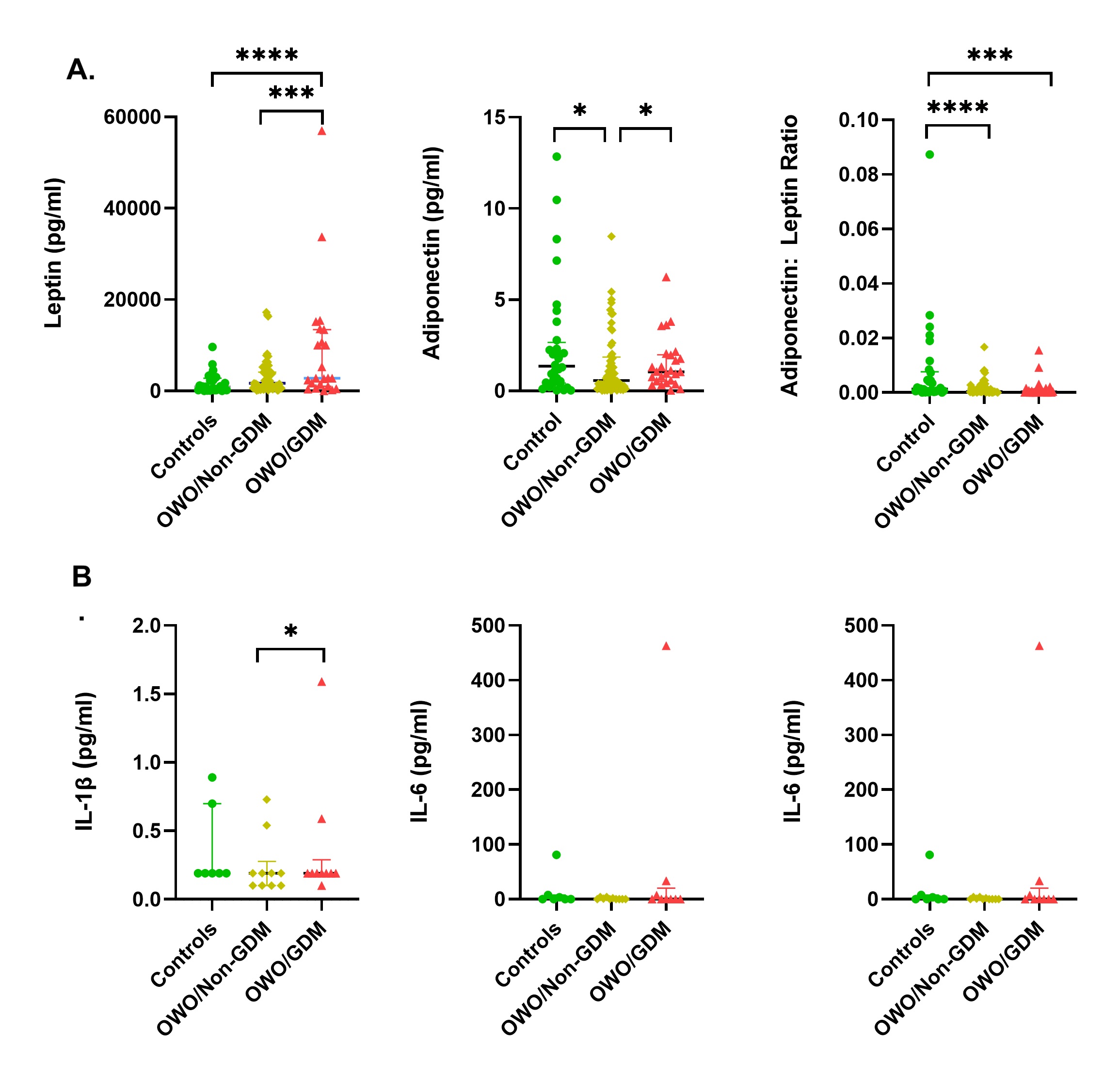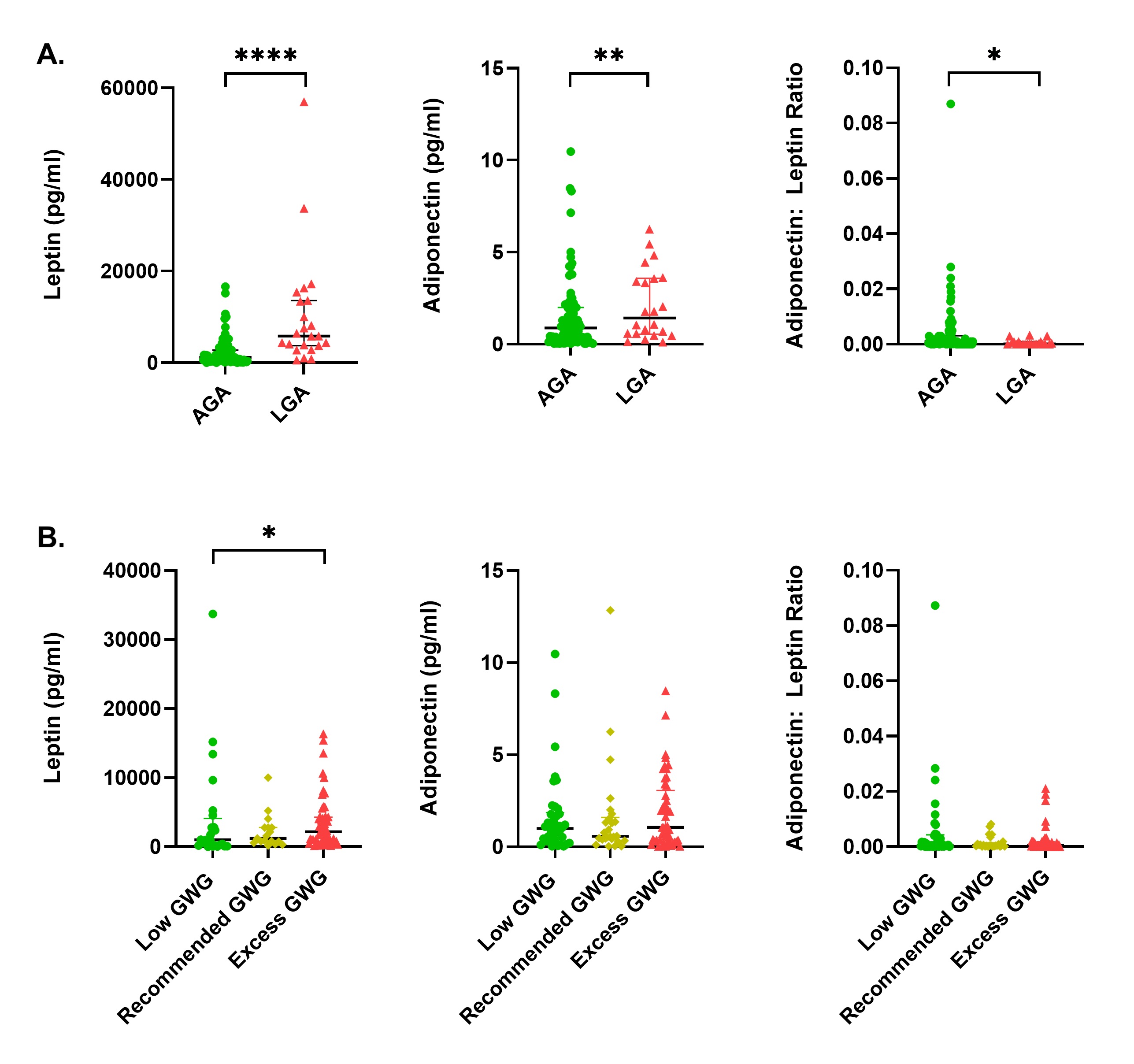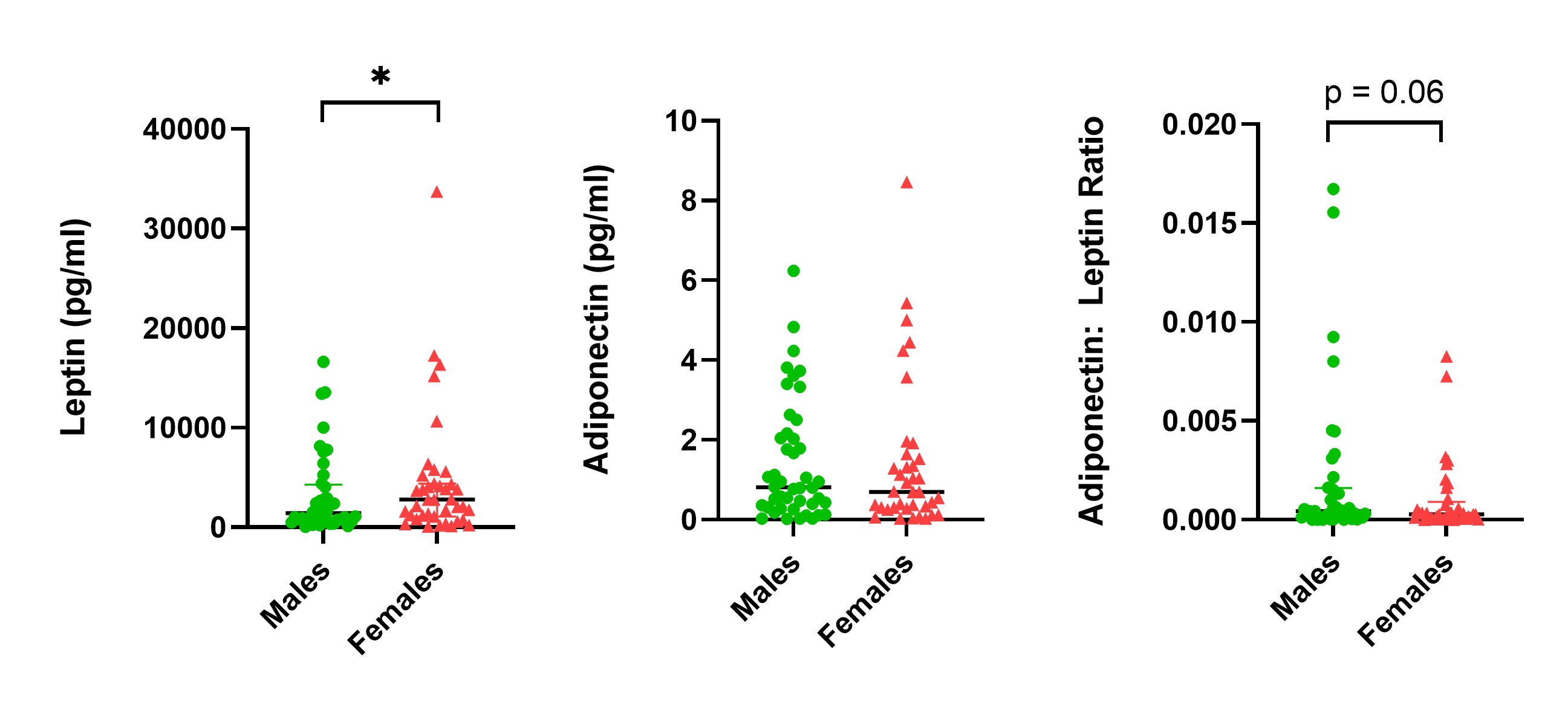Neonatal Fetal Nutrition & Metabolism 3
Session: Neonatal Fetal Nutrition & Metabolism 3
624 - Impact of Maternal Gestational Diabetes Mellitus and Obesity on Cord Adipocytokines and Correlation with Infant Characteristics
Monday, April 28, 2025
7:00am - 9:15am HST
Publication Number: 624.5554
Sowmya Kruttiventi, University of South Dakota, Sanford School of Medicine, Sioux Falls, SD, United States; Sruti Kalla, University of South Dakota, Sanford School of Medicine, Sioux Falls, SD, United States; Tricia D. Larsen, Sanford Research, Sioux Falls, SD, United States; Michelle L. Baack, University of South Dakota, Sanford School of Medicine, Sioux Falls, SD, United States

Sowmya Kruttiventi, MD (she/her/hers)
Pediatric Resident
University of South Dakota, Sanford School of Medicine
Sioux Falls, South Dakota, United States
Presenting Author(s)
Background: Infants exposed to gestational diabetes mellitus (GDM) and overweight/obese (OWO) pregnancy have higher risks of being large for gestational age (LGA) and of NICU hospitalizations, poor feeding, and adverse cardiometabolic, immune and neuropsychiatric outcomes over a lifetime. Rapid weight gain in infancy further compounds their risk of childhood obesity, but early intervention is limited by a lack of readily available biomarkers. Adverse in-utero environments in OWO and GDM are linked to dysregulated fetal adipokine secretion and altered inflammatory profiles that regulate metabolism and influence health outcomes. Specifically, the adipokines, leptin and adiponectin, are important mediators of appetite, insulin resistance and inflammation, and the adiponectin: leptin (A:L) ratio has been used as a surrogate of insulin resistance and metabolic risk.
Objective: We hypothesize that cord adipokines may predict poor outcomes in OWO and GDM exposed infants, and examined their correlation with maternal and fetal characteristics.
Design/Methods: We used bio-banked umbilical cord blood (n=117) from donors aged 18-45 stratified into 3 groups: controls, obesity without diabetes (OWO) and obesity with gestational diabetes mellitus (OWO/GDM). Leptin, adiponectin, tumor necrosis factor (TNF)-α, interleukin (IL)-1β and interleukin (IL)-6 were measured using ELISA and Milliplex assays. Statistical analysis was done by Krustal-Wallis and Mann-Whitney U tests for group comparisons and linear regression with significance set at p< 0.05.
Results: Infants exposed to OWO/GDM had higher leptin (p=0.006) and lower adiponectin (p=0.005) in cord blood, and the A:L ratio was lower (p < 0.0001). IL-1β levels trended higher in the OWO/GDM group (p=0.02) (Fig 1). Post hoc linear regression showed correlation of birth weight with leptin (R2=0.2, p< 0.0001). LGA infants had significantly higher leptin (p < 0.0001), lower adiponectin (p=0.005) and A:L ratios (p=0.03). Excess gestational weight gain (GWG) was also associated with higher cord leptin (p=0.03) (Fig 2). Sex was an important biological variable. In the OWO and OWO/GDM groups, leptin levels were lower in males (p=0.03) while females had a trend towards a lower A:L ratio (p=0.06) (Fig 3).
Conclusion(s): Our findings show that cord adipocytokines are associated with OWO, GDM, and GWG in pregnancy, as well as infant sex and LGA status, all risk factors for poorer outcomes. Ongoing studies will assess longitudinal follow-up of infant outcomes and feeding behaviors to determine whether adipocytokine profiles are more predictive of risk than maternal and birth characteristics alone.
Figure 1
 Cord blood (A) adipokine and (B) cytokine levels by group. * p ≤ 0.05 (p = 0.01, 0.02, 0.05), **p ≤ 0.01 (p = 0.006), ***p ≤ 0.001 (p = 0.0004), ****p ≤ 0.0001 by Kruskal-Wallis test with Dunn's multiple group comparison.
Cord blood (A) adipokine and (B) cytokine levels by group. * p ≤ 0.05 (p = 0.01, 0.02, 0.05), **p ≤ 0.01 (p = 0.006), ***p ≤ 0.001 (p = 0.0004), ****p ≤ 0.0001 by Kruskal-Wallis test with Dunn's multiple group comparison.Figure 2
 Cord blood adipokine levels in (A) infants classified as AGA vs LGA at birth (B) women with low, recommended and excess gestational weight gain (GWG) per CDC recommendations
Cord blood adipokine levels in (A) infants classified as AGA vs LGA at birth (B) women with low, recommended and excess gestational weight gain (GWG) per CDC recommendationsFigure 3
 Cord adipokine levels in male and female infants in the OWO and OWO/GDM groups
Cord adipokine levels in male and female infants in the OWO and OWO/GDM groups
